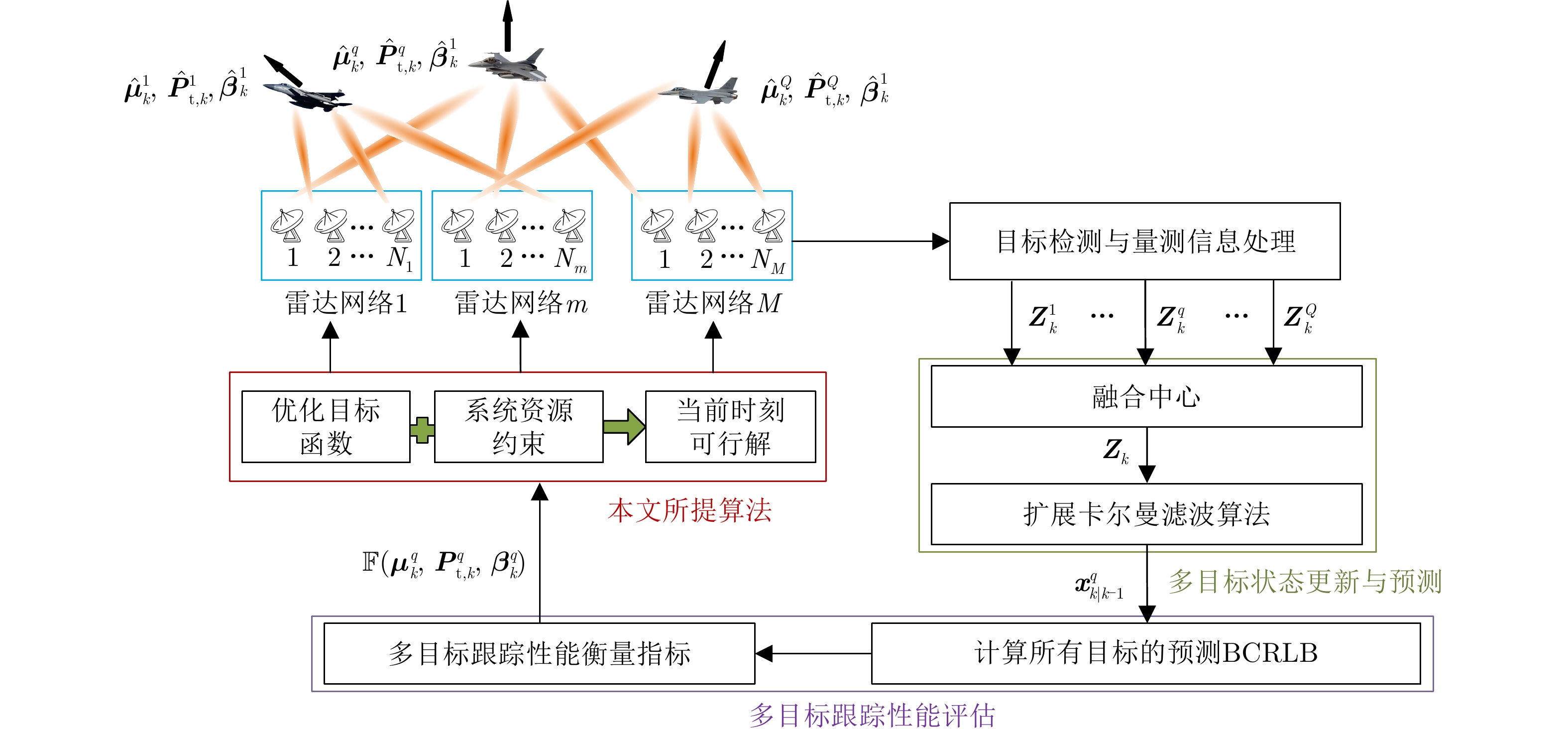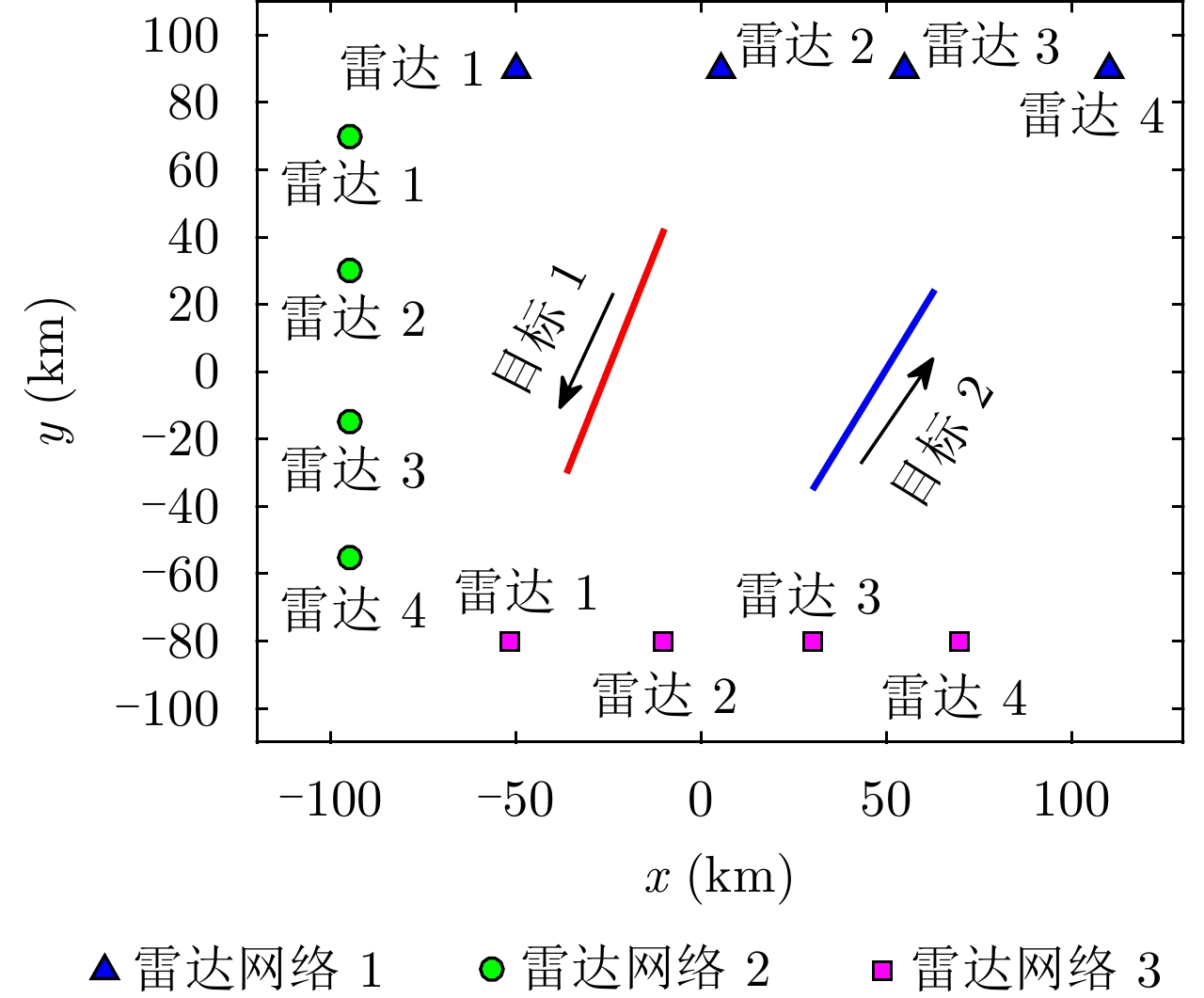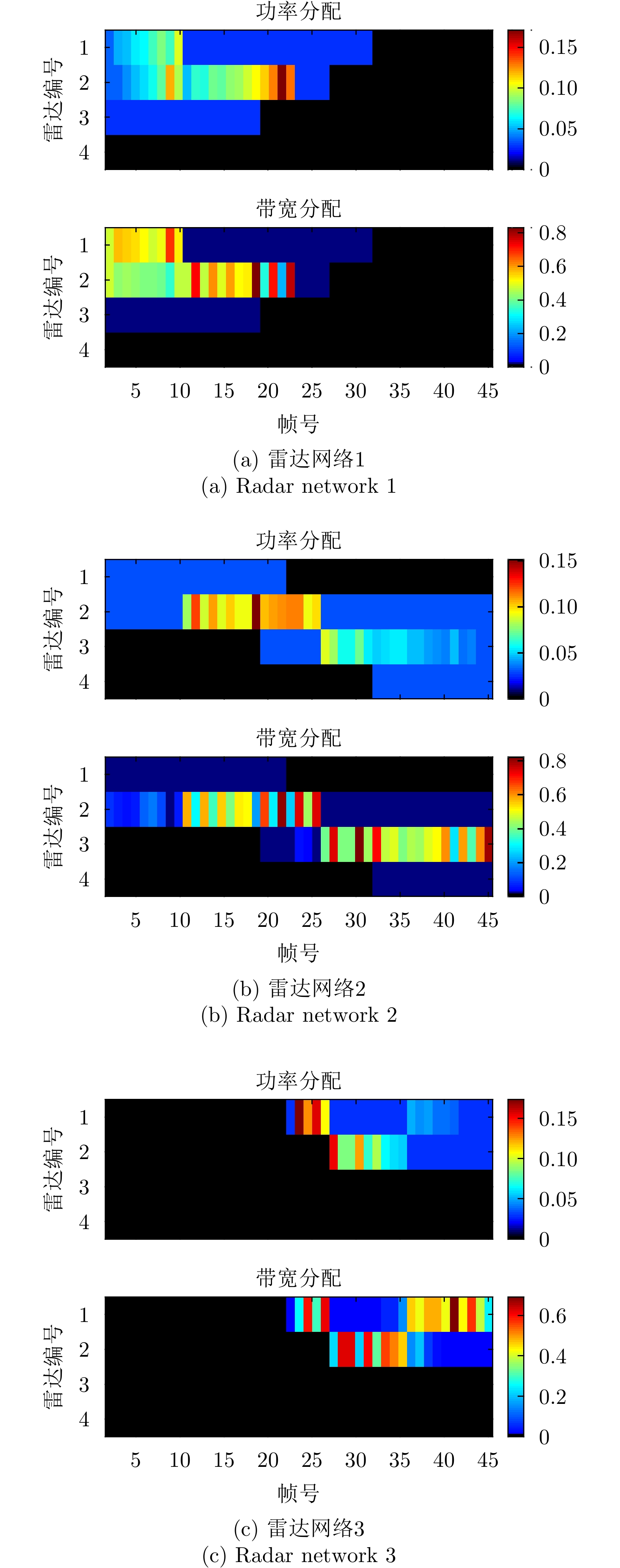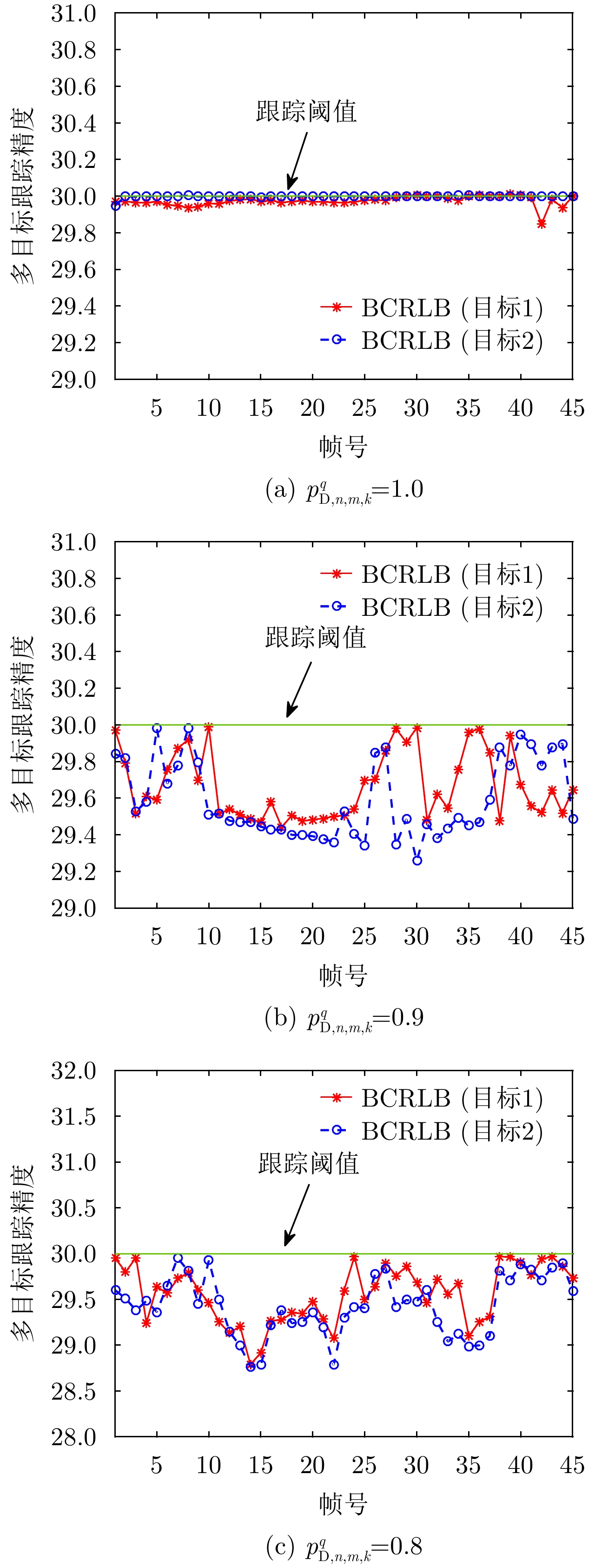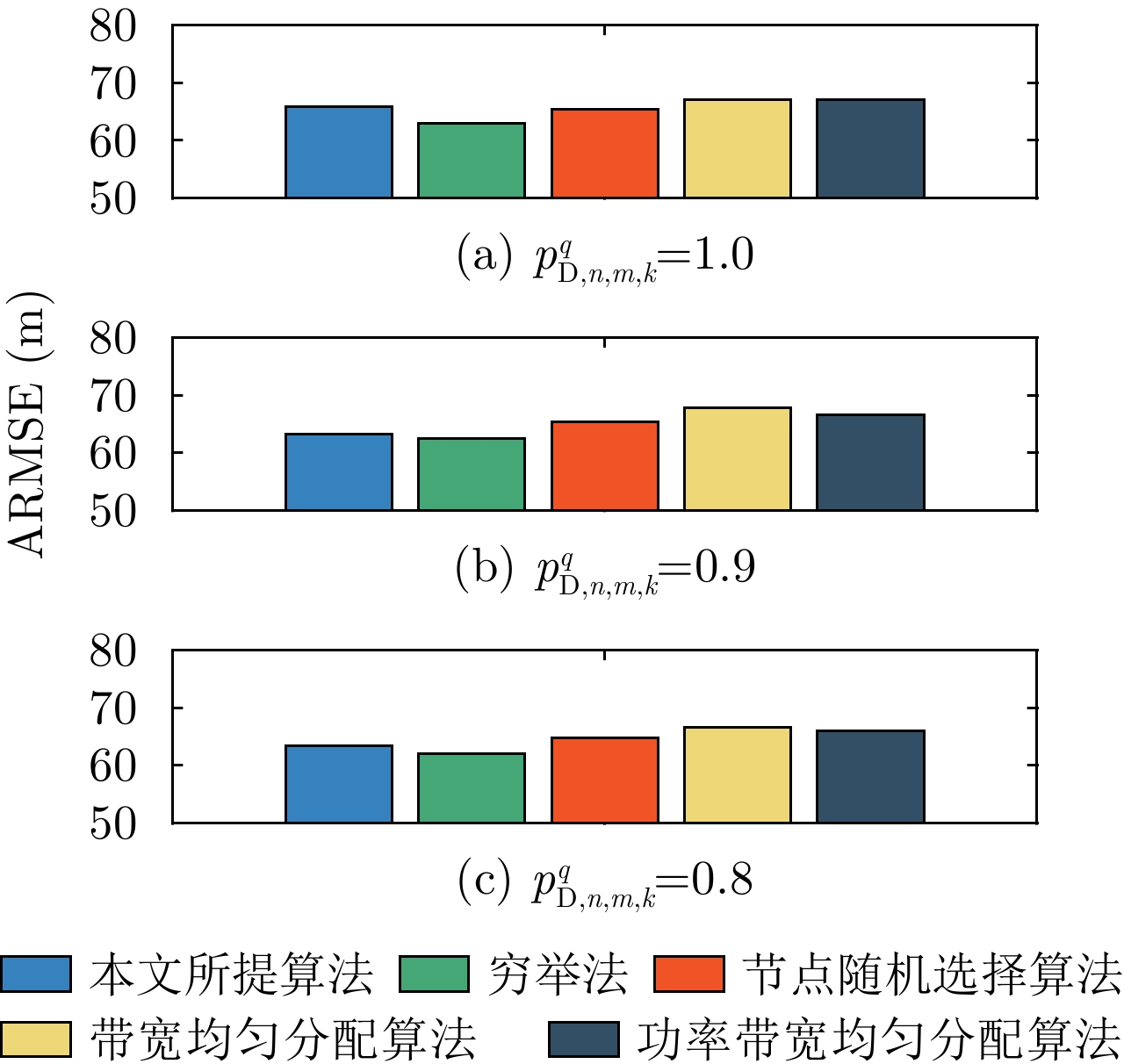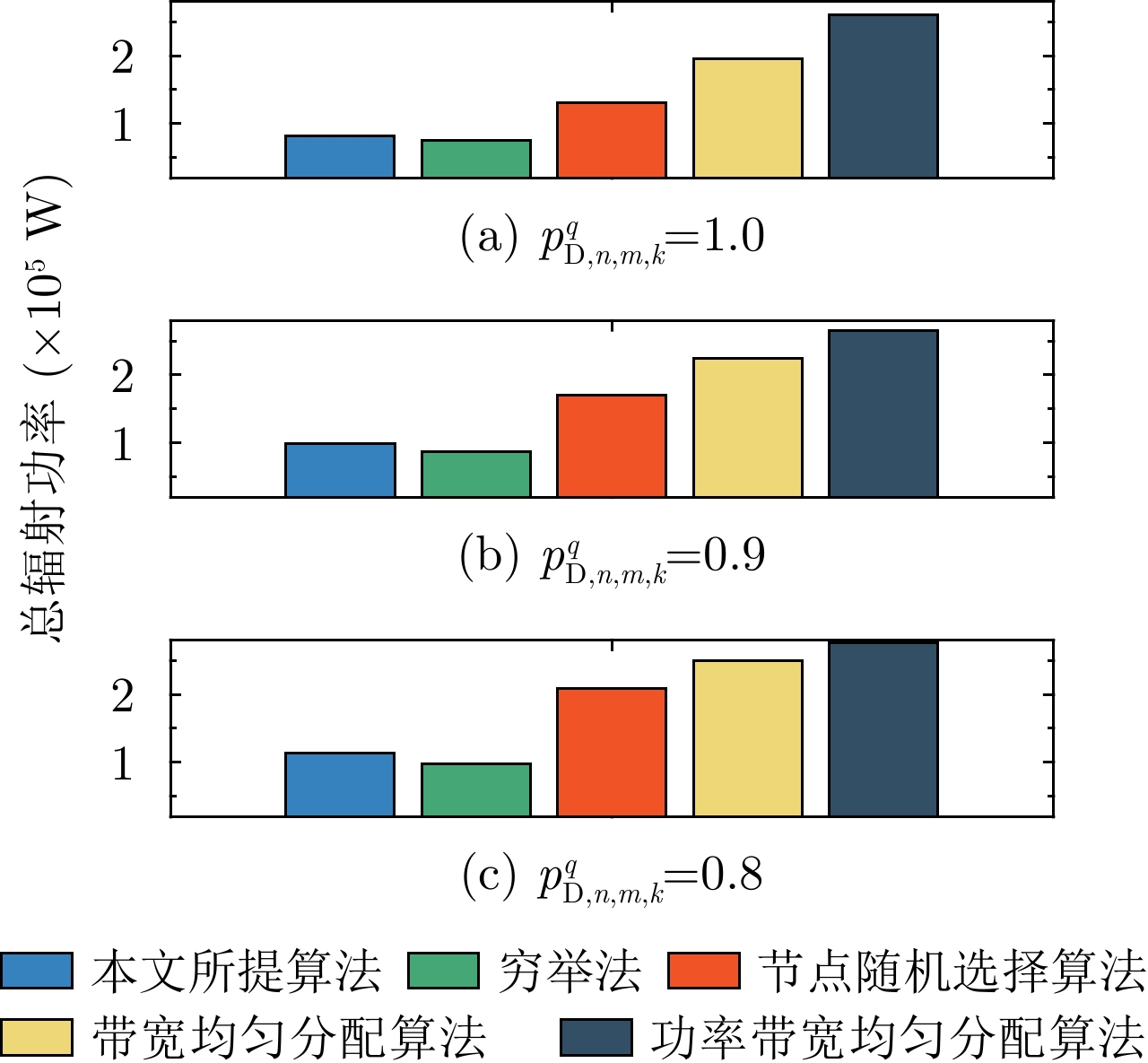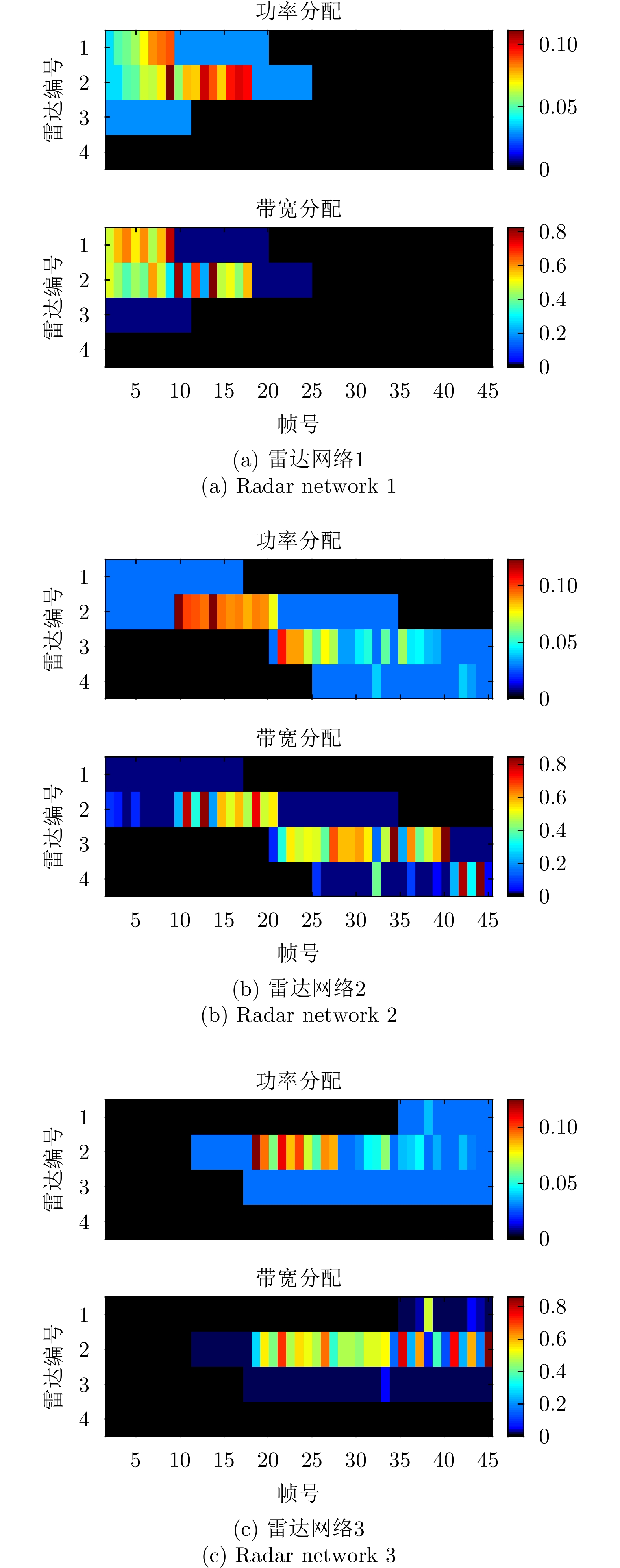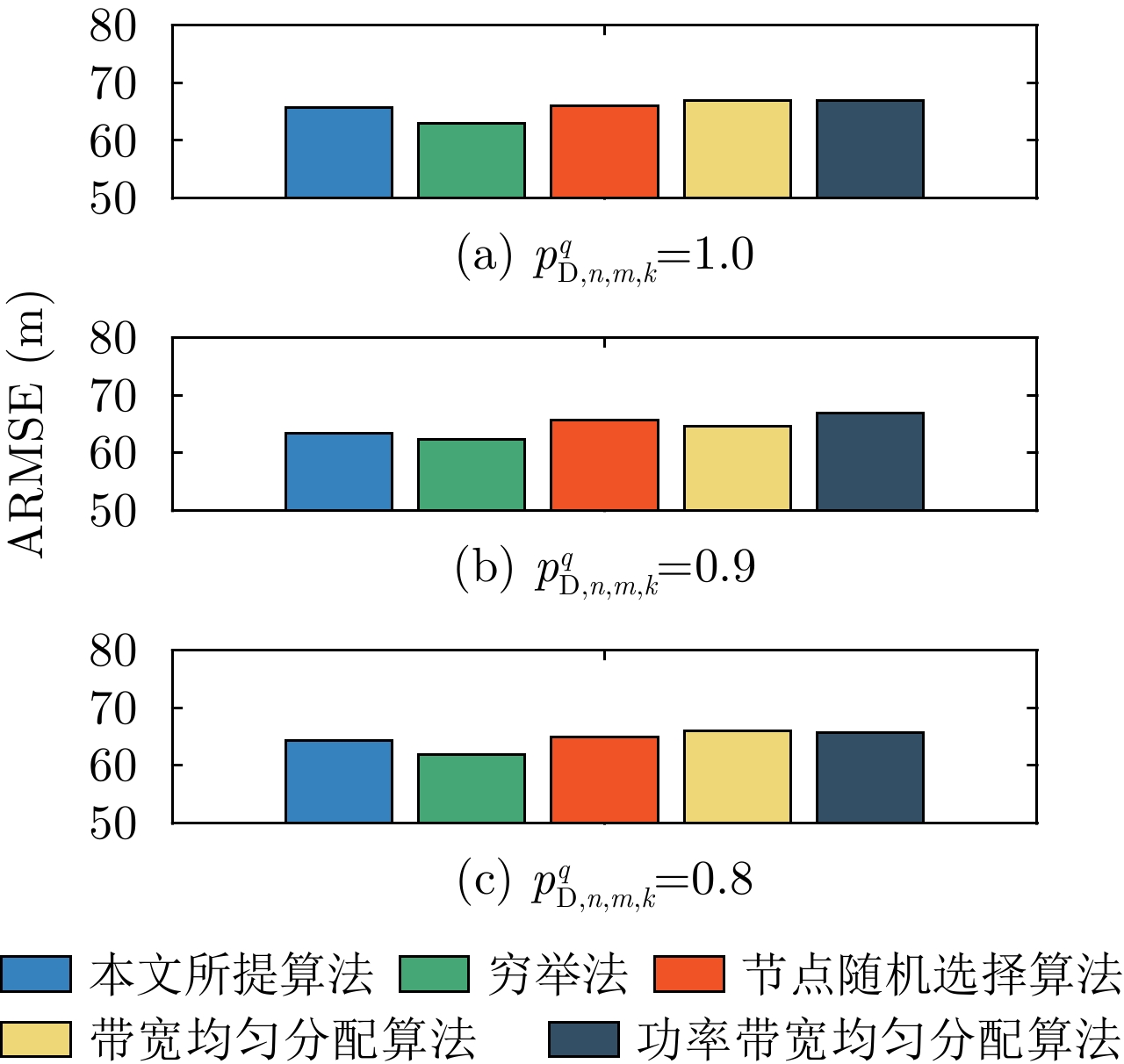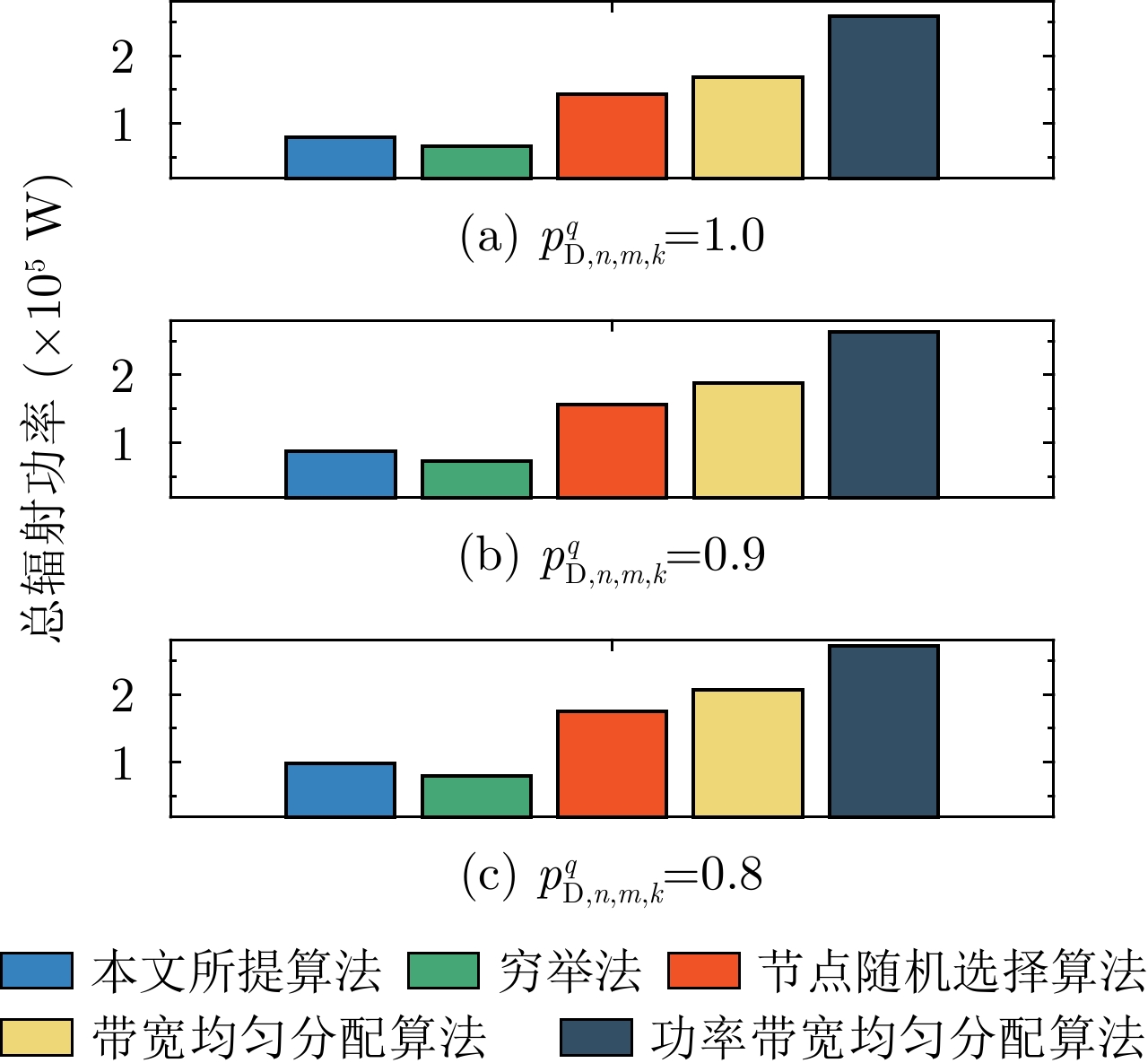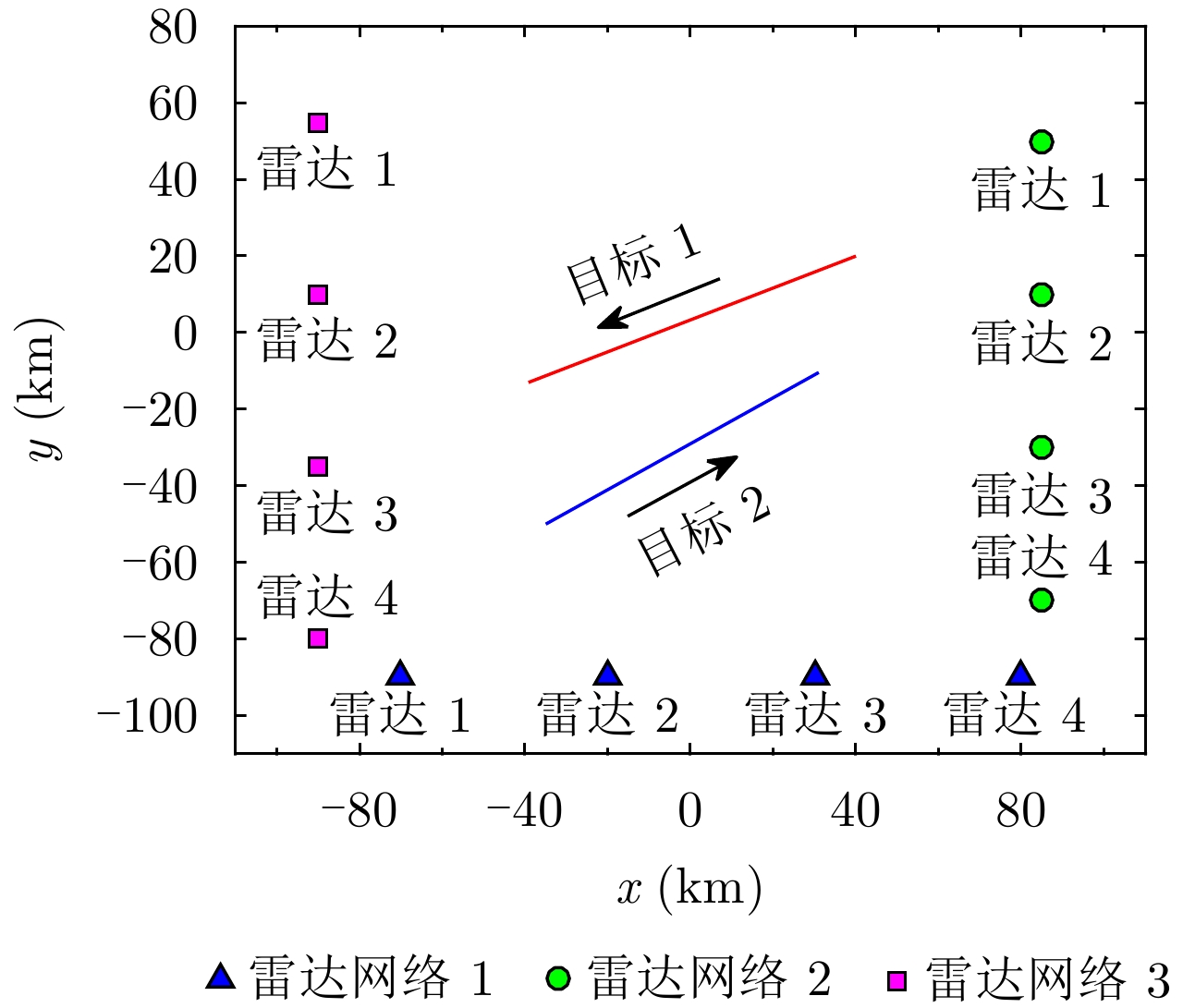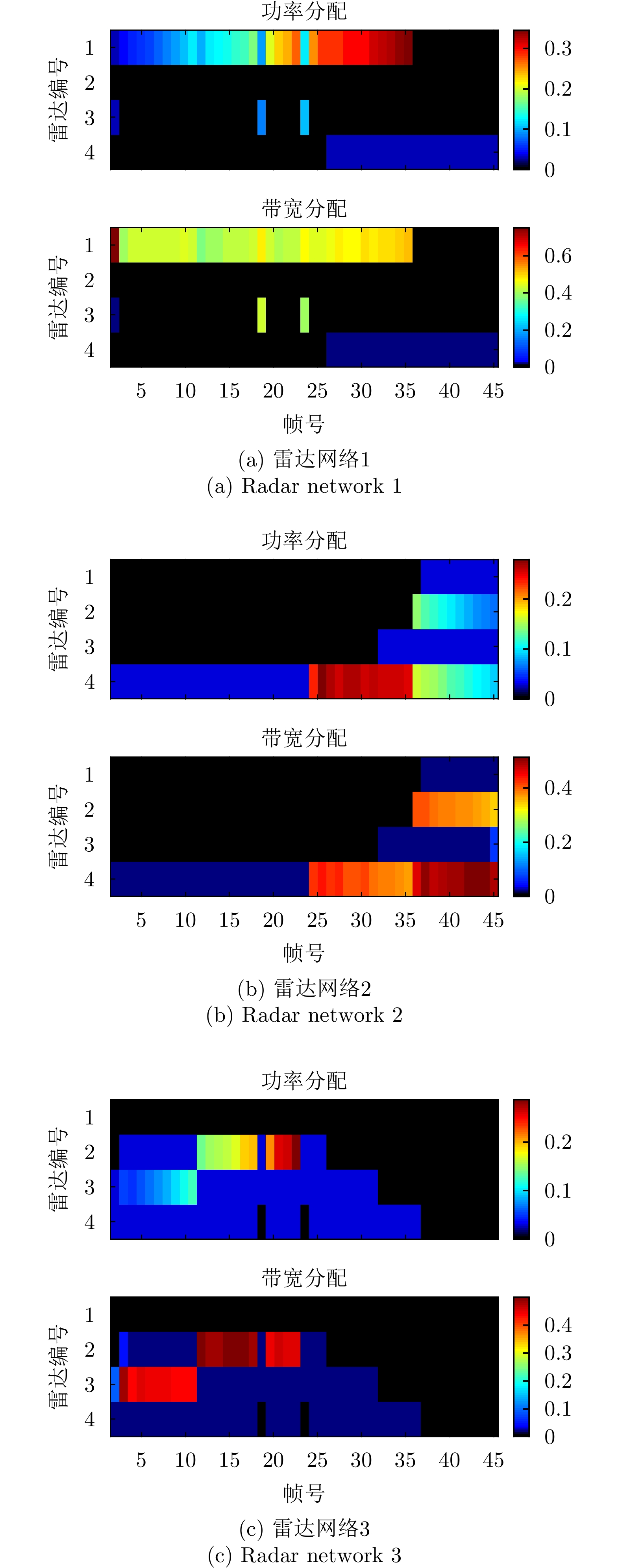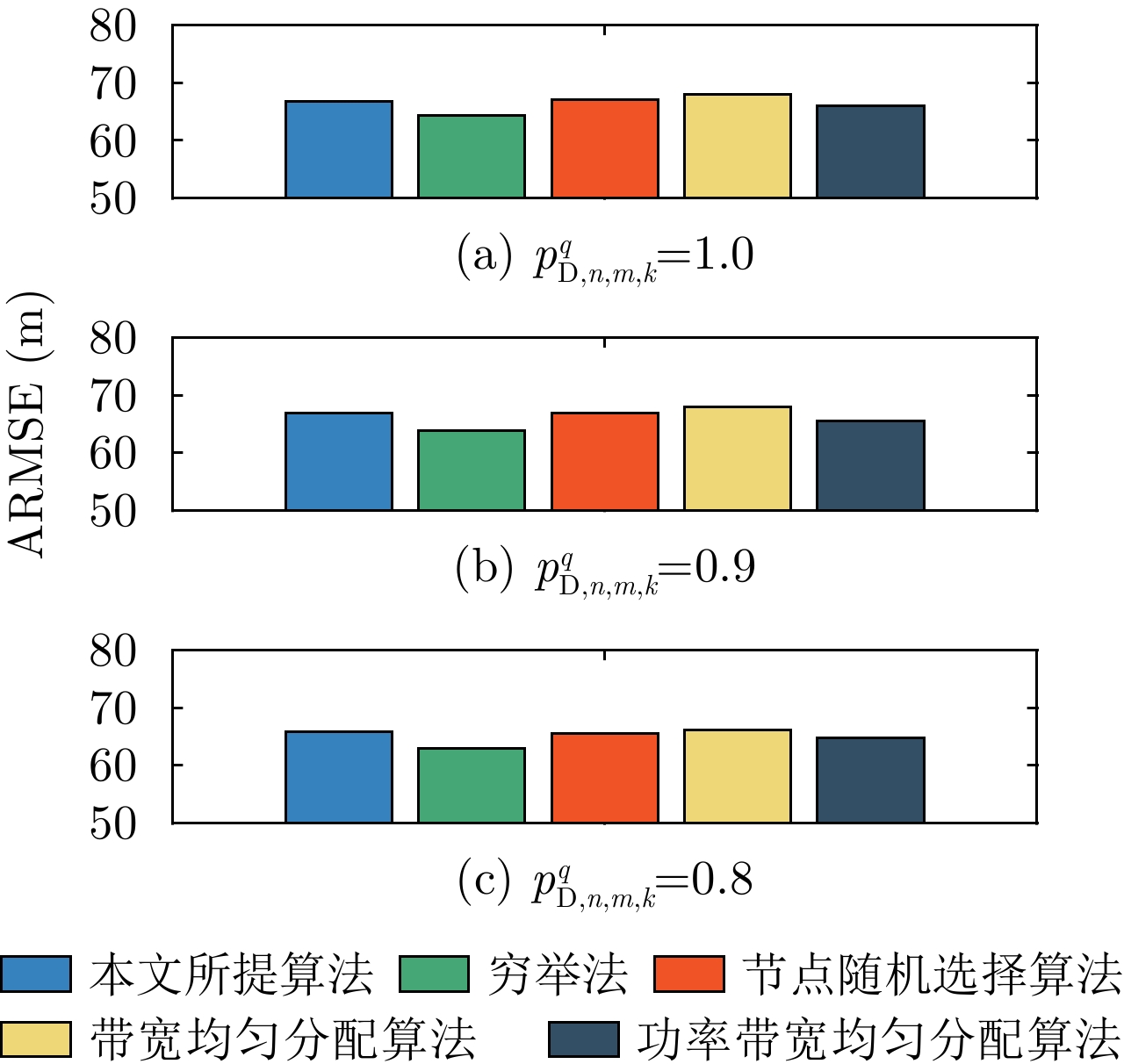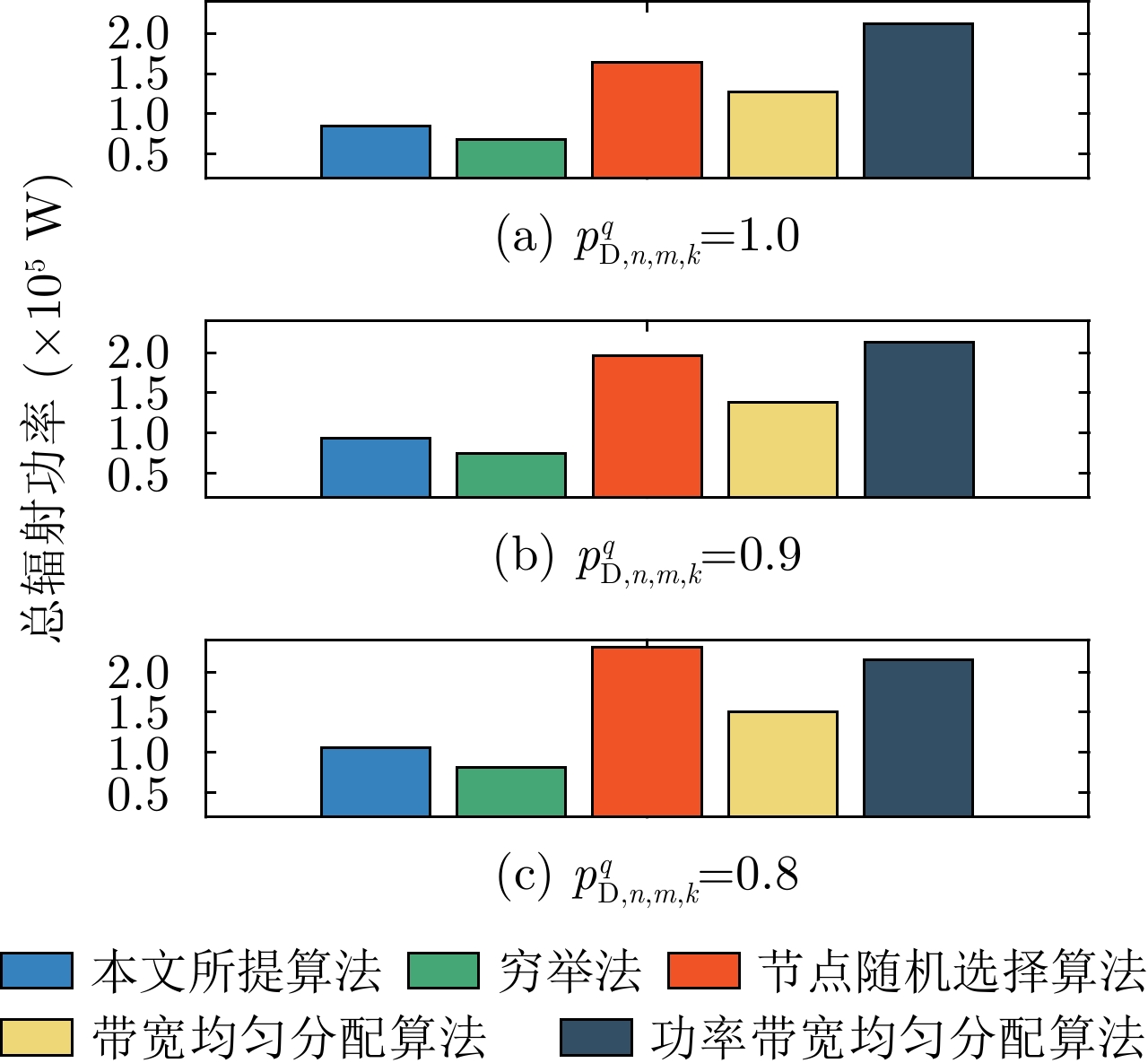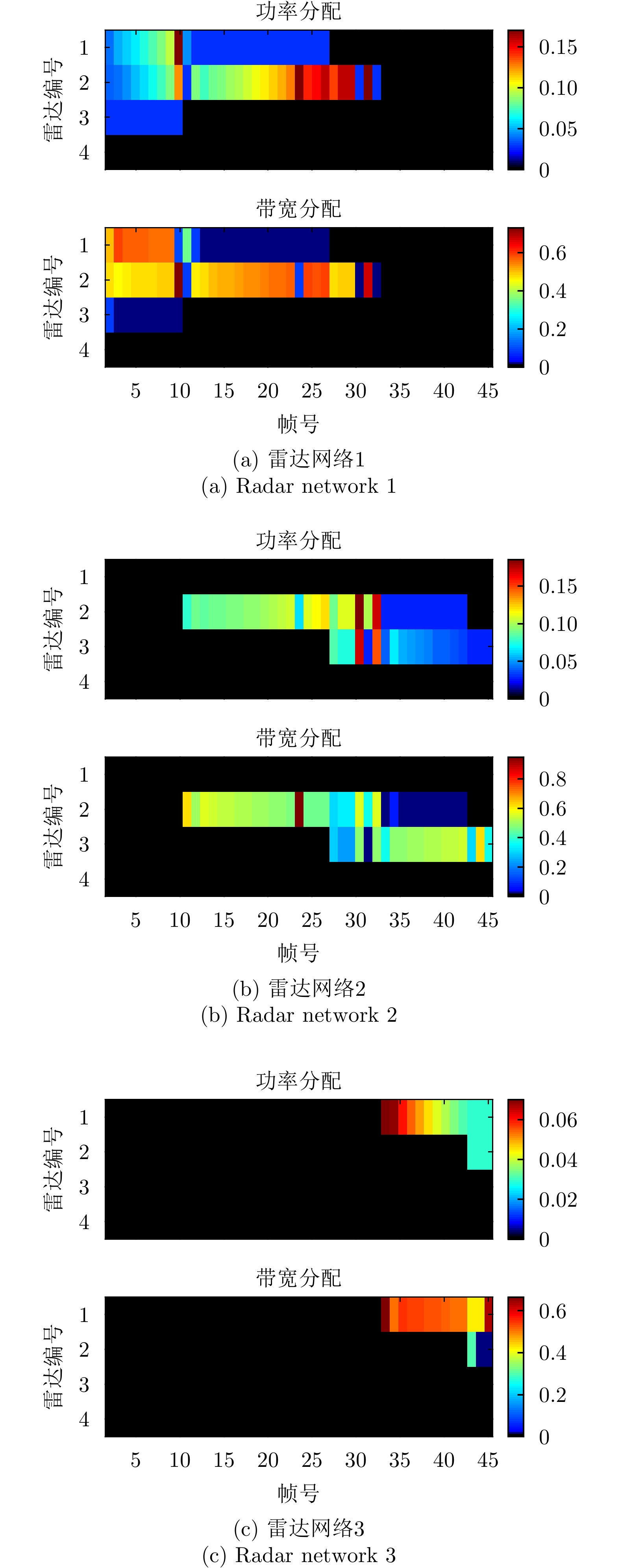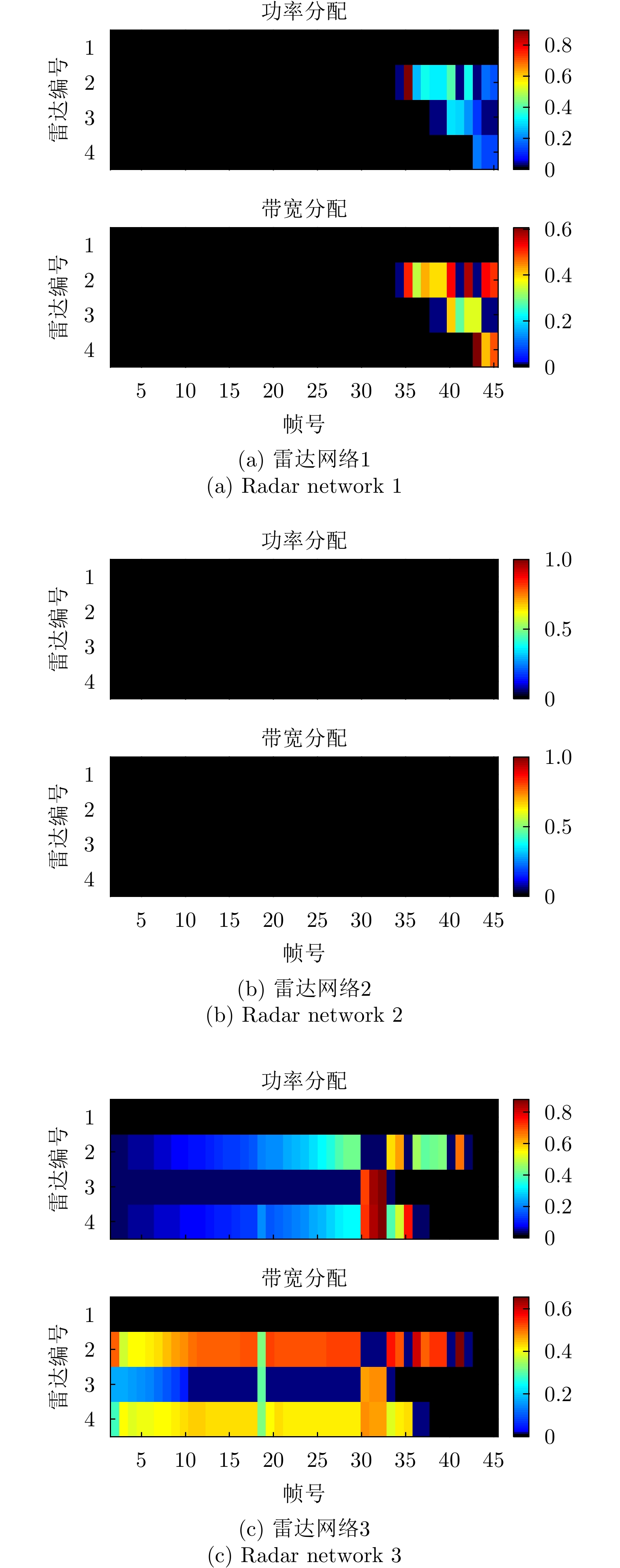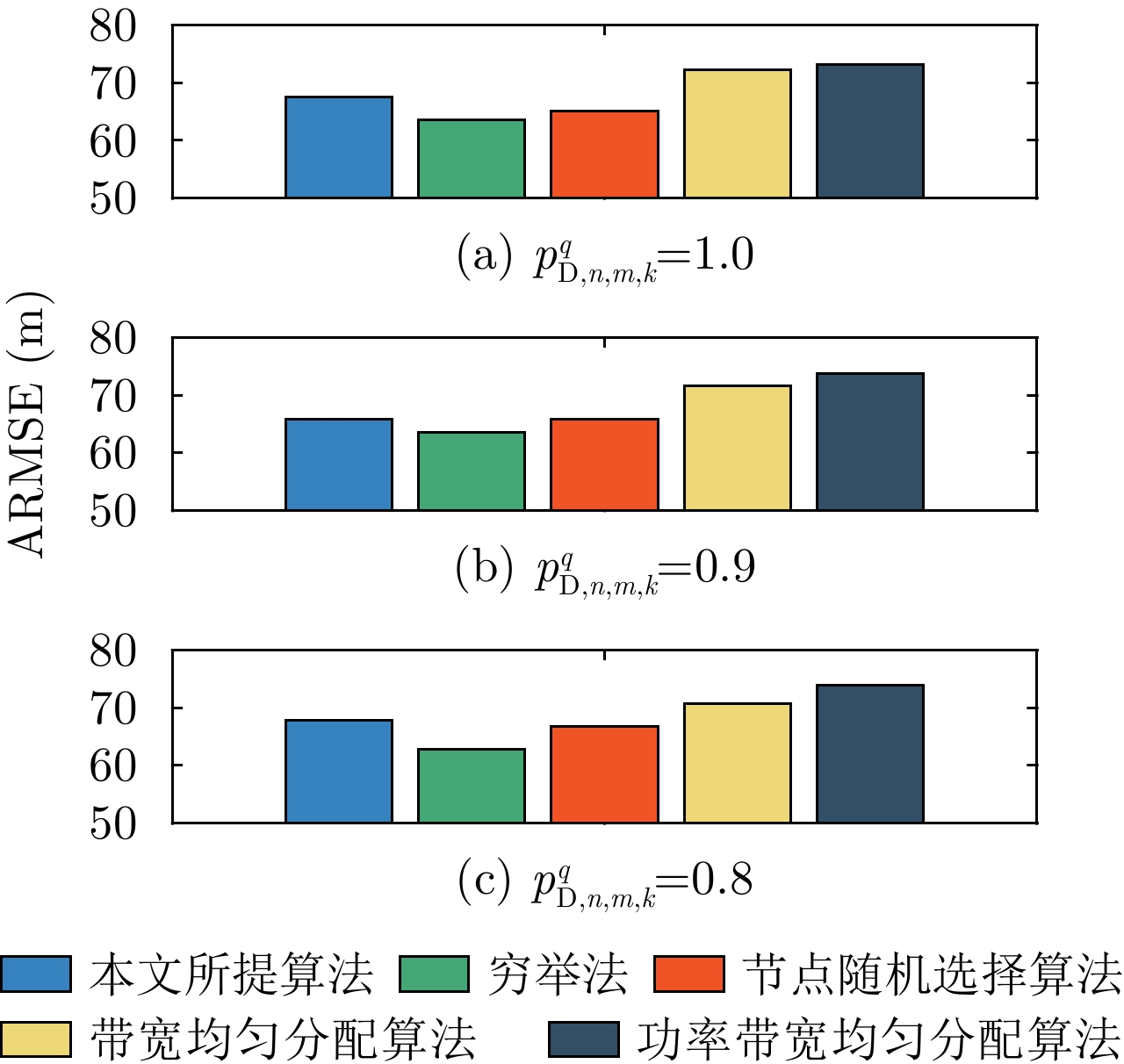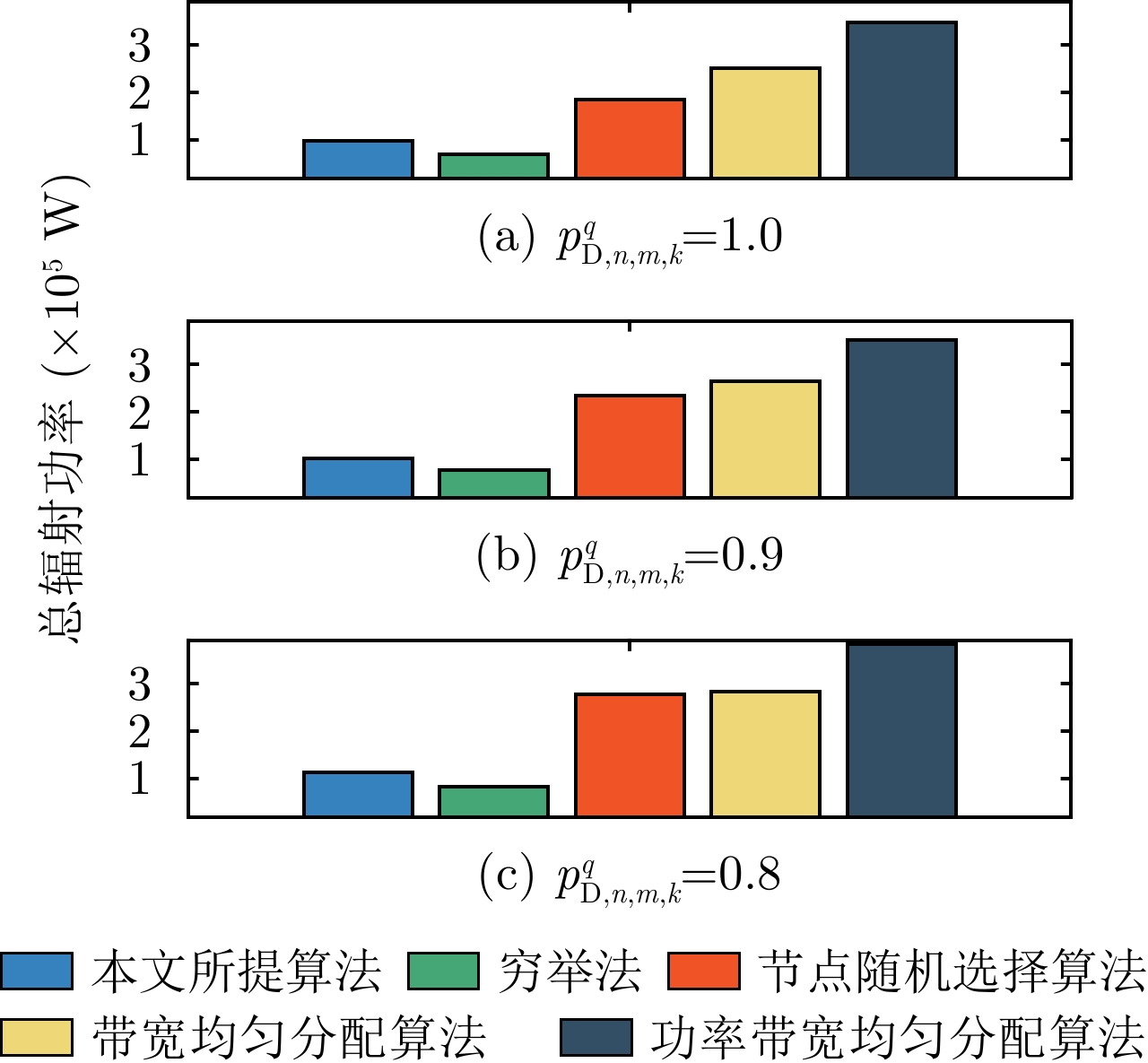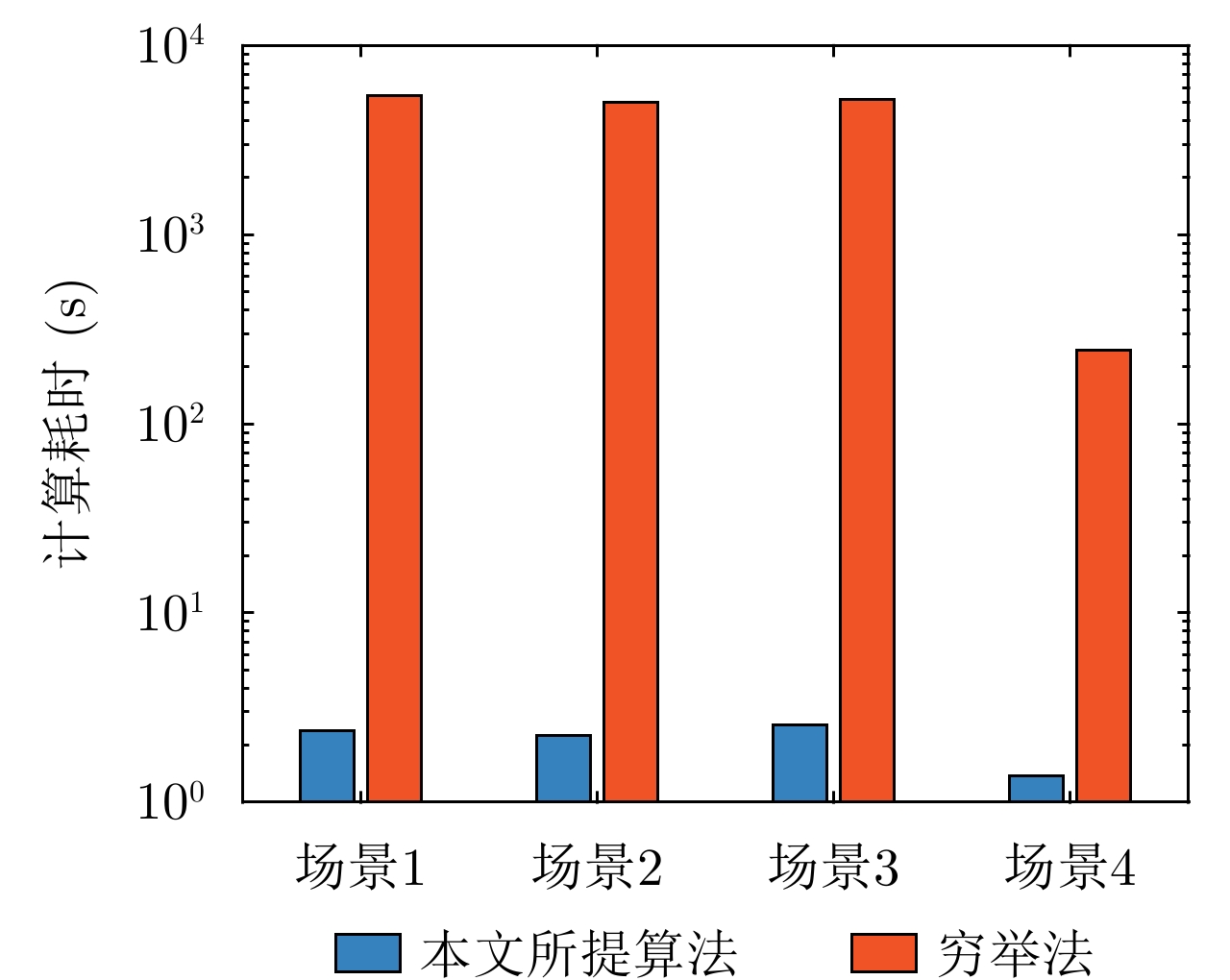| [1] |
HAIMOVICH A M, BLUM R S, and CIMIN L J. MIMO radar with widely separated antennas[J]. IEEE Signal Processing Magazine, 2008, 25(1): 116–129. doi: 10.1109/MSP.2008.4408448. |
| [2] |
GODRICH H, PETROPULU A P, and POOR H V. Power allocation strategies for target localization in distributed multiple-radar architectures[J]. IEEE Transactions on Signal Processing, 2011, 59(7): 3226–3240. doi: 10.1109/TSP.2011.2144976. |
| [3] |
CHAVALI P and NEHORAI A. Scheduling and power allocation in a cognitive radar network for multiple-target tracking[J]. IEEE Transactions on Signal Processing, 2012, 60(2): 715–729. doi: 10.1109/TSP.2011.2174989. |
| [4] |
XIE Mingchi, YI Wei, KONG Lingjiang, et al. Receive-beam resource allocation for multiple target tracking with distributed MIMO radars[J]. IEEE Transactions on Aerospace and Electronic Systems, 2018, 54(5): 2421–2436. doi: 10.1109/TAES.2018.2818579. |
| [5] |
ZHANG Haowei, ZONG Binfeng, and XIE Junwei. Power and bandwidth allocation for multi-target tracking in collocated MIMO radar[J]. IEEE Transactions on Vehicular Technology, 2020, 69(9): 9795–9806. doi: 10.1109/TVT.2020.3002899. |
| [6] |
易伟, 袁野, 刘光宏, 等. 多雷达协同探测技术研究进展:认知跟踪与资源调度算法[J]. 雷达学报, 2023, 12(3): 471–499. doi: 10.12000/JR23036. YI Wei, YUAN Ye, LIU Guanghong, et al. Recent advances in multi-radar collaborative surveillance: Cognitive tracking and resource scheduling algorithms[J]. Journal of Radars, 2023, 12(3): 471–499. doi: 10.12000/JR23036. |
| [7] |
ZHANG Weiwei, SHI Chenguang, SALOUS S, et al. Convex optimization-based power allocation strategies for target localization in distributed hybrid non-coherent active-passive radar networks[J]. IEEE Transactions on Signal Processing, 2022, 70: 2476–2488. doi: 10.1109/TSP.2022.3173756. |
| [8] |
XIE Mingchi, YI Wei, KIRUBARAJAN T, et al. Joint node selection and power allocation strategy for multitarget tracking in decentralized radar networks[J]. IEEE Transactions on Signal Processing, 2018, 66(3): 729–743. doi: 10.1109/TSP.2017.2777394. |
| [9] |
ZHANG Haowei, LIU Weijian, XIE Junwei, et al. Joint subarray selection and power allocation for cognitive target tracking in large-scale MIMO radar networks[J]. IEEE Systems Journal, 2020, 14(2): 2569–2580. doi: 10.1109/JSYST.2019.2960401. |
| [10] |
YI Wei, YUAN Ye, HOSEINNEZHAD R, et al. Resource scheduling for distributed multi-target tracking in netted colocated MIMO radar systems[J]. IEEE Transactions on Signal Processing, 2020, 68: 1602–1617. doi: 10.1109/TSP.2020.2976587. |
| [11] |
SUN Hao, LI Ming, ZUO Lei, et al. Joint radar scheduling and beampattern design for multitarget tracking in netted colocated MIMO radar systems[J]. IEEE Signal Processing Letters, 2021, 28: 1863–1867. doi: 10.1109/LSP.2021.3108675. |
| [12] |
YAN Junkun, DAI Jinhui, PU Wenqiang, et al. Target capacity based resource optimization for multiple target tracking in radar network[J]. IEEE Transactions on Signal Processing, 2021, 69: 2410–2421. doi: 10.1109/TSP.2021.3071173. |
| [13] |
ZHANG Haowei, LIU Weijian, ZHANG Zhaojian, et al. Joint target assignment and power allocation in multiple distributed MIMO radar networks[J]. IEEE Systems Journal, 2021, 15(1): 694–704. doi: 10.1109/JSYST.2020.2986020. |
| [14] |
SUN Hao, LI Ming, ZUO Lei, et al. Resource allocation for multitarget tracking and data reduction in radar network with sensor location uncertainty[J]. IEEE Transactions on Signal Processing, 2021, 69: 4843–4858. doi: 10.1109/TSP.2021.3101018. |
| [15] |
AJORLOO A, AMINI A, and BASTANI M H. A compressive sensing-based colocated MIMO radar power allocation and waveform design[J]. IEEE Sensors Journal, 2018, 18(22): 9420–9429. doi: 10.1109/JSEN.2018.2871214. |
| [16] |
DU Yi, LIAO Kefei, OUYANG Shan, et al. Time and aperture resource allocation strategy for multitarget ISAR imaging in a radar network[J]. IEEE Sensors Journal, 2020, 20(6): 3196–3206. doi: 10.1109/JSEN.2019.2954711. |
| [17] |
WANG Dan, ZHANG Qun, LUO Ying, et al. Joint optimization of time and aperture resource allocation strategy for multi-target ISAR imaging in radar sensor network[J]. IEEE Sensors Journal, 2021, 21(17): 19570–19581. doi: 10.1109/JSEN.2021.3090053. |
| [18] |
SUN Hao, LI Ming, ZUO Lei, et al. JPBA of ARN for target tracking in clutter[J]. IET Radar, Sonar & Navigation, 2019, 13(11): 2024–2033. doi: 10.1049/iet-rsn.2019.0038. |
| [19] |
DAI Jinhui, YAN Junkun, LV Jindong, et al. Composed resource optimization for multitarget tracking in active and passive radar network[J]. IEEE Transactions on Geoscience and Remote Sensing, 2022, 60: 5119215. doi: 10.1109/TGRS.2022.3215228. |
| [20] |
ZHANG Haowei, LIU Weijian, SHI Junpeng, et al. Joint detection threshold optimization and illumination time allocation strategy for cognitive tracking in a networked radar system[J]. IEEE Transactions on Signal Processing, 2022, 70: 5833–5847. doi: 10.1109/TSP.2022.3188205. |
| [21] |
LI Zhengjie, XIE Junwei, LIU Weijian, et al. Joint strategy of power and bandwidth allocation for multiple maneuvering target tracking in cognitive MIMO radar with collocated antennas[J]. IEEE Transactions on Vehicular Technology, 2023, 72(1): 190–204. doi: 10.1109/TVT.2022.3204939. |
| [22] |
YAN Junkun, PU Wenqiang, ZHOU Shenghua, et al. Collaborative detection and power allocation framework for target tracking in multiple radar system[J]. Information Fusion, 2020, 55: 173–183. doi: 10.1016/j.inffus.2019.08.010. |
| [23] |
LI Xi, CHENG Ting, SU Yang, et al. Joint time-space resource allocation and waveform selection for the collocated MIMO radar in multiple targets tracking[J]. Signal Processing, 2020, 176: 107650. doi: 10.1016/j.sigpro.2020.107650. |
| [24] |
ZHANG Haowei, LIU Weijian, ZONG Binfeng, et al. An efficient power allocation strategy for maneuvering target tracking in cognitive MIMO radar[J]. IEEE Transactions on Signal Processing, 2021, 69: 1591–1602. doi: 10.1109/TSP.2020.3047227. |
| [25] |
ZUO Lei, HU Juan, SUN Hao, et al. Resource allocation for target tracking in multiple radar architectures over lossy networks[J]. Signal Processing, 2023, 208: 108973. doi: 10.1016/J.SIGPRO.2023.108973. |
| [26] |
SUN Hao, LI Ming, ZUO Lei, et al. Joint threshold optimization and power allocation of cognitive radar network for target tracking in clutter[J]. Signal Processing, 2020, 172: 107566. doi: 10.1016/j.sigpro.2020.107566. |
| [27] |
LAWRENCE D E. Low probability of intercept antenna array beamforming[J]. IEEE Transactions on Antennas and Propagation, 2010, 58(9): 2858–2865. doi: 10.1109/TAP.2010.2052573. |
| [28] |
GOVONI M A, LI Hongbin, and KOSINSKI J A. Low probability of interception of an advanced noise radar waveform with linear-FM[J]. IEEE Transactions on Aerospace and Electronic Systems, 2013, 49(2): 1351–1356. doi: 10.1109/TAES.2013.6494419. |
| [29] |
ZHANG Zhenkai and TIAN Yubo. A novel resource scheduling method of netted radars based on Markov decision process during target tracking in clutter[J]. EURASIP Journal on Advances in Signal Processing, 2016, 2016(1): 16. doi: 10.1186/s13634-016-0309-3. |
| [30] |
SHI Chenguang, WANG Fei, SELLATHURAI M, et al. Power minimization-based robust OFDM radar waveform design for radar and communication systems in coexistence[J]. IEEE Transactions on Signal Processing, 2018, 66(5): 1316–1330. doi: 10.1109/TSP.2017.2770086. |
| [31] |
ZHOU Chengwei, GU Yujie, HE Shibo, et al. A robust and efficient algorithm for coprime array adaptive beamforming[J]. IEEE Transactions on Vehicular Technology, 2018, 67(2): 1099–1112. doi: 10.1109/TVT.2017.2704610. |
| [32] |
SHI Chenguang, DING Lintao, WANG Fei, et al. Low probability of intercept-based collaborative power and bandwidth allocation strategy for multi-target tracking in distributed radar network system[J]. IEEE Sensors Journal, 2020, 20(12): 6367–6377. doi: 10.1109/JSEN.2020.2977328. |
| [33] |
YUAN Ye, YI Wei, HOSEINNEZHAD R, et al. Robust power allocation for resource-aware multi-target tracking with colocated MIMO radars[J]. IEEE Transactions on Signal Processing, 2021, 69: 443–458. doi: 10.1109/TSP.2020.3047519. |
| [34] |
SHI Chenguang, WANG Yijie, SALOUS S, et al. Joint transmit resource management and waveform selection strategy for target tracking in distributed phased array radar network[J]. IEEE Transactions on Aerospace and Electronic Systems, 2022, 58(4): 2762–2778. doi: 10.1109/TAES.2021.3138869. |
| [35] |
SU Yang, CHENG Ting, HE Zishu, et al. Joint waveform control and resource optimization for maneuvering targets tracking in netted colocated MIMO radar systems[J]. IEEE Systems Journal, 2022, 16(3): 3960–3971. doi: 10.1109/JSYST.2021.3098622. |
| [36] |
YAN Junkun, DAI Jinhui, PU Wenqiang, et al. Quality of service constrained-resource allocation scheme for multiple target tracking in radar sensor network[J]. IEEE Systems Journal, 2021, 15(1): 771–779. doi: 10.1109/JSYST.2020.2990409. |
| [37] |
SHI Yuchun, JIU Bo, YAN Junkun, et al. Data-driven simultaneous multibeam power allocation: When multiple targets tracking meets deep reinforcement learning[J]. IEEE Systems Journal, 2021, 15(1): 1264–1274. doi: 10.1109/JSYST.2020.2984774. |
| [38] |
DELIGIANNIS A, PANOUI A, LAMBOTHARAN S, et al. Game-theoretic power allocation and the Nash equilibrium analysis for a multistatic MIMO radar network[J]. IEEE Transactions on Signal Processing, 2017, 65(24): 6397–6408. doi: 10.1109/TSP.2017.2755591. |
| [39] |
YAN Junkun, PU Wenqiang, ZHOU Shenghua, et al. Optimal resource allocation for asynchronous multiple targets tracking in heterogeneous radar networks[J]. IEEE Transactions on Signal Processing, 2020, 68: 4055–4068. doi: 10.1109/TSP.2020.3007313. |
| [40] |
YAN Junkun, PU Wenqiang, LIU Hongwei, et al. Robust chance constrained power allocation scheme for multiple target localization in colocated MIMO radar system[J]. IEEE Transactions on Signal Processing, 2018, 66(15): 3946–3957. doi: 10.1109/TSP.2018.2841865. |
| [41] |
SHI Chenguang, DING Lintao, WANG Fei, et al. Joint target assignment and resource optimization framework for multitarget tracking in phased array radar network[J]. IEEE Systems Journal, 2021, 15(3): 4379–4390. doi: 10.1109/JSYST.2020.3025867. |
| [42] |
ZHANG Weiwei, SHI Chenguang, and ZHOU Jianjiang. Power minimization-based joint resource allocation algorithm for target localization in noncoherent distributed MIMO radar system[J]. IEEE Systems Journal, 2022, 16(2): 2183–2194. doi: 10.1109/JSYST.2021.3126152. |
| [43] |
FARINA A, RISTIC B, and TIMMONERI L. Cramér-Rao bound for nonlinear filtering with Pd<1 and its application to target tracking[J]. IEEE Transactions on Signal Processing, 2002, 50(8): 1916–1924. doi: 10.1109/TSP.2002.800411. |
| [44] |
ANASTASIO V, FARINA A, COLONE F, et al. Cramér-Rao lower bound with Pd<1 for target localisation accuracy in multistatic passive radar[J]. IET Radar, Sonar & Navigation, 2014, 8(7): 767–775. doi: 10.1049/iet-rsn.2013.0213. |
| [45] |
SUN Jun, LU Xiujuan, YUAN Ye, et al. Resource allocation for multi-target tracking in multi-static radar systems with imperfect detection performance[C]. 2020 IEEE Radar Conference, Florence Italy, 2020.
|
| [46] |
SHI Chenguang, SHI Zhao, TANG Zhicheng, et al. Joint Radar Selection and Resource Allocation for Multi-target Tracking in Multiple Radar Networks with Non-ideal Detection Performance[M]. FU Wenxing, GU Mancang, and NIU Yifeng. Proceedings of 2022 International Conference on Autonomous Unmanned Systems (ICAUS 2022). Singapore: Springer, 2023: 82–89.
|
| [47] |
BOYD S and VANDENBERGHE L. Convex Optimization[M]. Cambridge: Cambridge University Press, 2004.
|
| [48] |
YAN Junkun, LIU Hongwei, JIU Bo, et al. Simultaneous multibeam resource allocation scheme for multiple target tracking[J]. IEEE Transactions on Signal Processing, 2015, 63(12): 3110–3122. doi: 10.1109/TSP.2015.2417504. |
| [49] |
STOICA P and SELEN Y. Cyclic minimizers, majorization techniques, and the expectation-maximization algorithm: A refresher[J]. IEEE Signal Processing Magazine, 2004, 21(1): 112–114. doi: 10.1109/MSP.2004.1267055. |




 Submit Manuscript
Submit Manuscript Peer Review
Peer Review Editor Work
Editor Work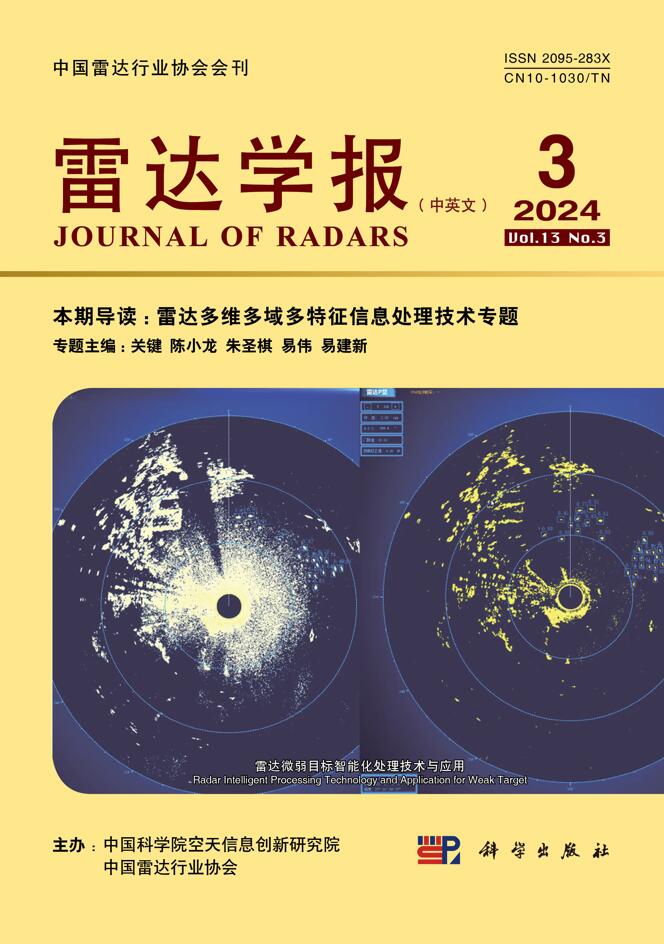

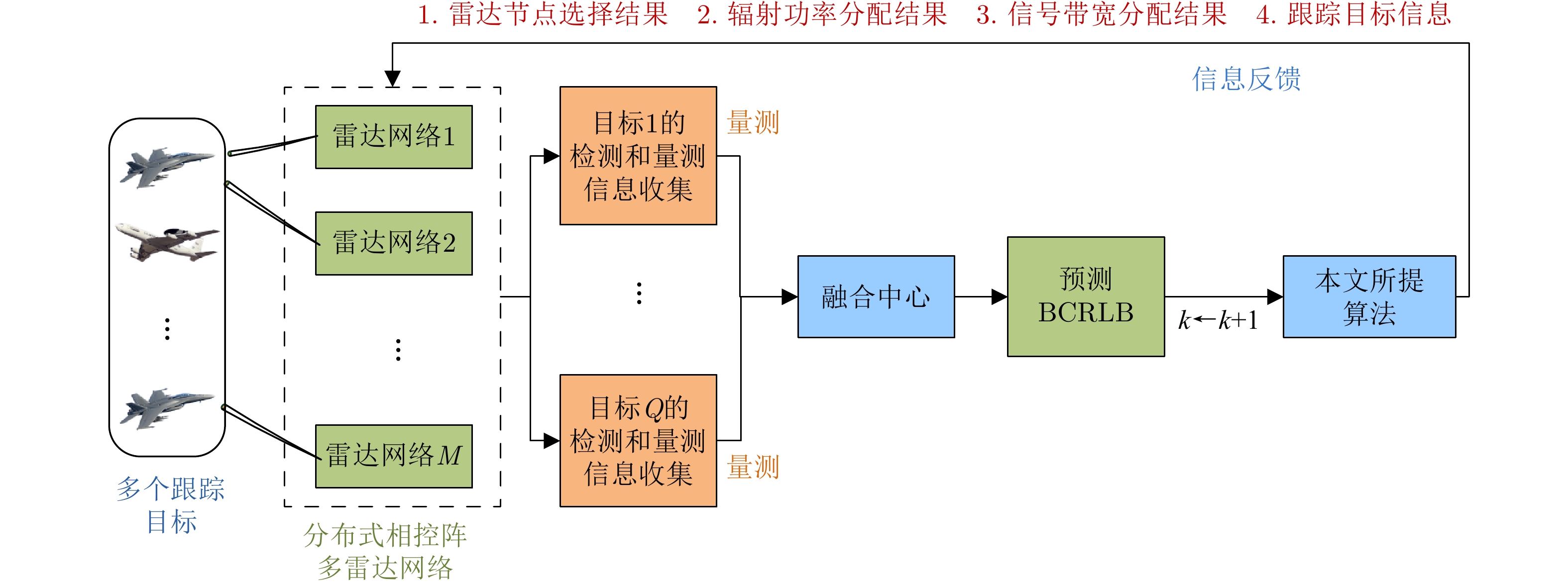



 DownLoad:
DownLoad:
